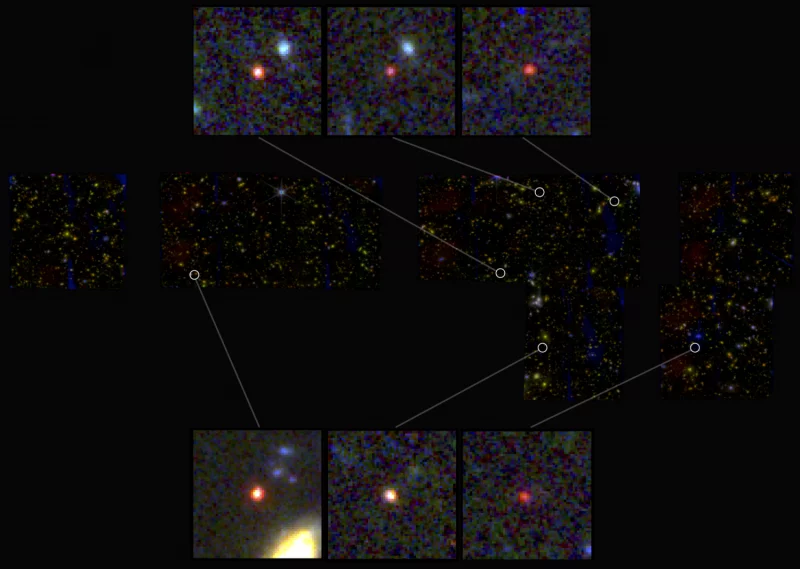James Webb Photographs Ancient, Massive Galaxies That Shouldn’t Exist
![]()
The James Webb Space Telescope (JWST) has been used to identify six galaxies that potentially emerged extremely early in the universe’s history and are so massive they should not be possible under the current cosmological theory.
An international team of astrophysicists discovered these mysterious objects in images captured by JWST and estimate that they may have exists at the dawn of the universe — roughly 500 to 700 million years after the Big Bang or more than 13 billion years ago. Not only are they ancient, but they are also massive and contain almost as many stars as the Milky Way Galaxy.
“It’s bananas,” Erica Nelson, co-author of the new research and assistant professor of astrophysics at Colorado University Boulder, says. “You just don’t expect the early universe to be able to organize itself that quickly. These galaxies should not have had time to form.”
The researchers have published their findings in Nature, and while these aren’t the oldest galaxies that JWST has identified — last year, scientists noted several galaixes that likely formed around 350 million years after the big bang and one, called GLASS-z13, dates to just 300 million years after the big bang — but the size and age of these objects together have the potential to rewrite astronomy textbooks.

These objects appear red in the JWST images; red light usually means old light, and the scientists explain that as the universe expands, the light objects emit stretches out. The more light stretches, the redder it appears to instruments like Webb.
“They were so red and so bright,” Nelson says. “We weren’t expecting to see them.”
Current calculations suggest that there should not have been enough matter in existence at the time these galaxies appear to have formed in order to make up their size and number of stars so quickly. And yet, these galaxies exist — not just one, but six.
“The Milky Way forms about one to two new stars every year. Some of these galaxies would have to be forming hundreds of new stars a year for the entire history of the universe,” Nelson explains. “If even one of these galaxies is real, it will push against the limits of our understanding of cosmology.”
That last note is important: if these objects are what they appear to be, it would fundamentally change current beliefs about the universe. The team is planning to use JWST to collect more information on these objects to verify their findings.
Image credits: NASA, ESA, CSA, I. Labbe (Swinburne University of Technology). Image processing: G. Brammer (Niels Bohr Institute’s Cosmic Dawn Center at the University of Copenhagen).